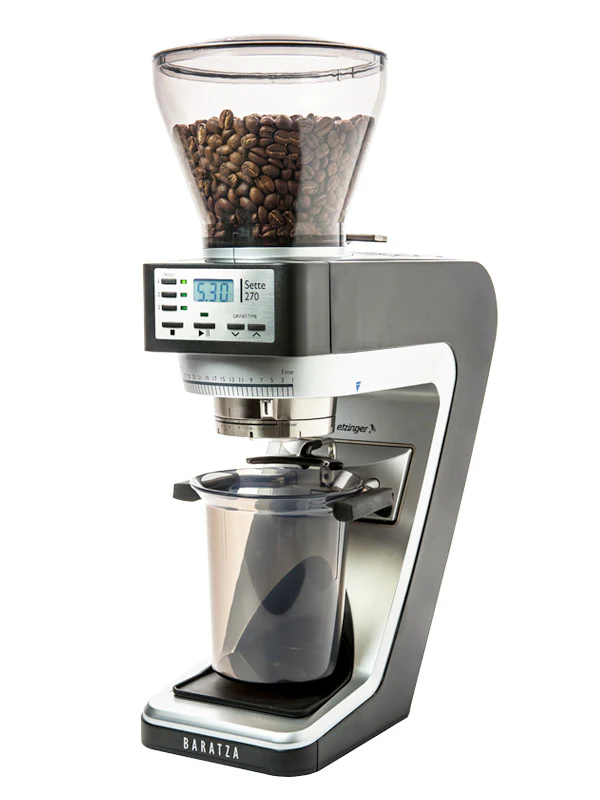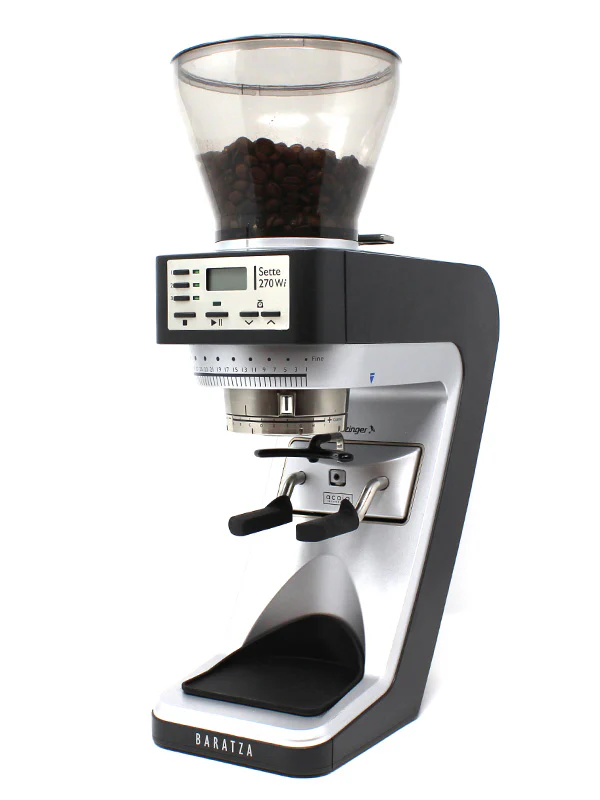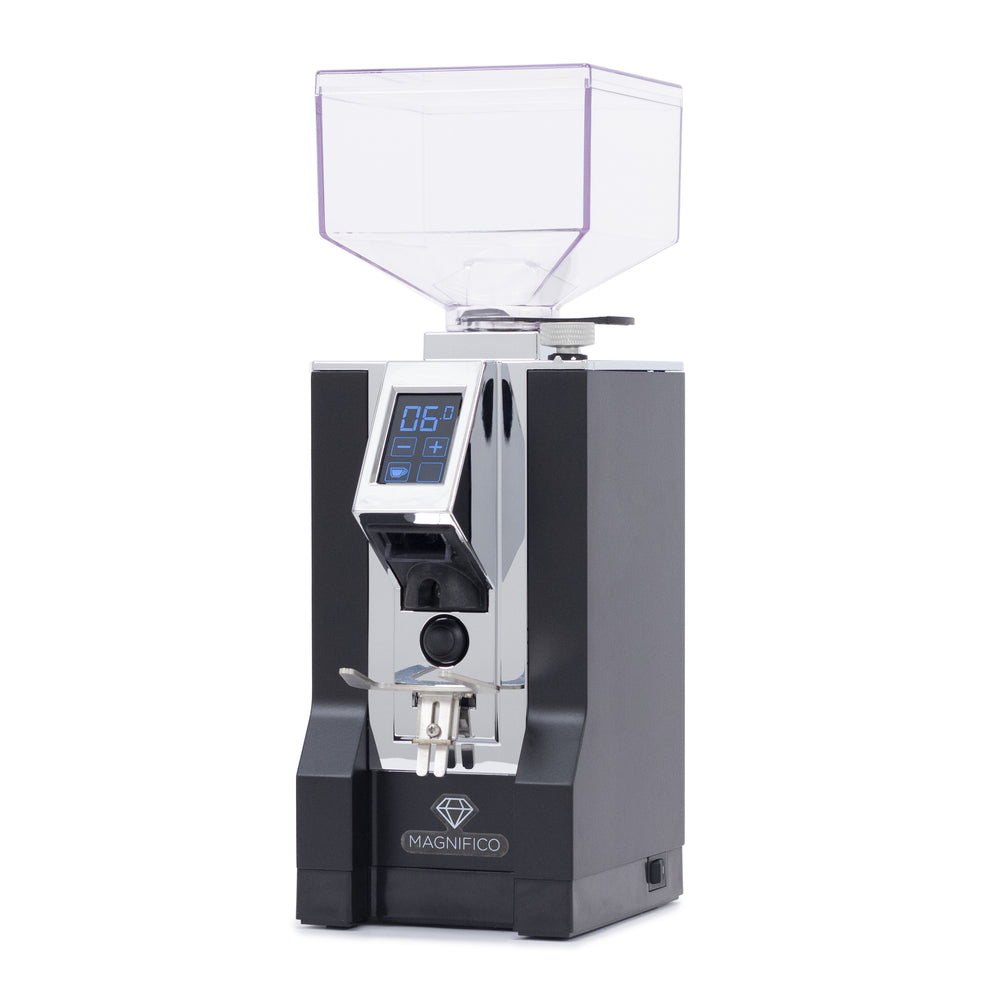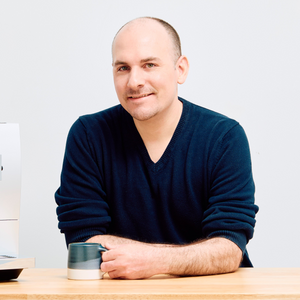Beginners Guide to Coffee Grinders

If you’re committed to making coffee at home, choosing the right grinder is essential in so many ways. Brewing with fresh and properly ground coffee is the single most impactful thing you can do to guarantee your success. However, besides the coffee you brew, there are a few other things to think about when it comes to making a selection. In most cases, you’ll be using your grinder every day and the style and capabilities of the one you pick will have a significant impact on your daily routine.
This guide has been on our site for a while, because this topic will never not be relevant. We’ve updated it to focus on modern concepts while paying less attention to more outmoded concepts. If you’re interested in a particular topic, the table of contents will be broken up into major concepts so you can easily jump to whatever you’re interested in.
Why is it Important to Own a Grinder?
Like all food products, coffee is better the fresher it is. Because coffee has to be roasted before you can brew with it, it contains high levels of CO2 that it releases over time in a process called off-gassing or degassing. The CO2 is responsible for the crema found on espresso and the bloom that occurs when making pour-over coffee. When coffee is pre-ground, much of the CO2 is released during the initial grinding, and the increased surface area causes it to oxidize (go stale) more quickly. Whole bean coffee also loses freshness but not as quickly, meaning that not only will freshly ground coffee taste better than pre-ground, but when stored properly will retain its freshness more successfully.
The interesting thing about coffee as a beverage is that you actually brew it yourself every time you want to drink it, unlike beer or wine which coffee is often compared to. The thing is that because you’re actively preparing a drink with ingredients that are aging and in changing conditions (such as humidity), if you were brewing espresso with pre-ground coffee, your extractions would change due to the volatile nature of coffee as an ingredient. In order to maintain consistency, you would need to adjust your grind to compensate for the coffee aging and other environmental factors affecting it.
As a brief recap, grinding your own coffee means that it’s going to be fresher and you’re able to make adjustments to the grind to make sure that you’re able to extract consistently. With that in mind, let’s take a look at the different types of grinders that are available and the features they offer.
Burr Types
In the world of coffee grinding there are two styles of burrs, flat and conical. There has been a lot of discourse surrounding which types of burrs produce better tasting coffee but that topic deserves its own piece entirely, and if you really can't make up your mind, the VS6 Grinder from Varia has the ability to swap between flat and conical burrs. I'll throw in our livestream from when we compared some of the burrs at the end of this section.
Flat

Flat burrs are toothed flat discs with one burr remaining stationary while the other rotates. Flat burrs generally grind more slowly than conical burrs and lose a portion of their cutting surface from screw holes that are necessary for attaching the burr to the motor and the mounting plate. When it comes to grinding performance, flat burrs are known to produce grounds that have a more consistent particle size, promoting clarity in the cup.
In many cases, but not all, the top and bottom burrs will feature the same teeth configuration, unless otherwise specified by the manufacturer.
Blind
Blind burrs are a subset of flat burrs that have no screw holes and are instead rear mounted. The benefit to this style of burr is that the cutting surface is uninterrupted and ultimately larger than burrs of the same diameter that had screw holes. As a result, blind burrs help to reduce grind retention, increase grinding speed, and improve particle consistency.
Conical

Conical burrs feature one cone shaped burr and one ring shaped burr that surrounds it. In most cases the cone rotates, though some manufacturers like Etzinger feature a design where the ring rotates instead. Compared to flat burrs, conical burrs are generally faster and retain less coffee. Conical burrs also produce more fines, helping create even more restriction in espresso. This can lead to chocolatey, deeper, more "gooey" espressos. Conical burrs don't need to spin quite as fast, so you'll find conical burrs on less expensive grinders that don't have quite as powerful motors as, say, a commercial grinder.
Because they tend to cut coffee faster, conical burrs are more often found in entry level grinders.
Grind Adjustment
Grind adjustment refers to the movement of the burrs when changing the settings on your grinder. Moving the burrs closer together will make your grind finer while moving them further apart makes it coarser. When it comes to adjusting your grind there are two categories the burr movement can fall into, stepped and stepless.
Stepped

Stepped grind adjustment means that the burrs move in predetermined distances or "steps." This style of adjustment is very common on more entry level grinders that are generally geared towards limited all-purpose use. The benefit to stepped adjustment is that the coordinates for your grind setting are clearly marked and easy to return to or record as needed. On all-purpose grinders this is especially helpful when you're changing between brew methods and need to recall a previous setting.
The downside to stepped adjustment is that the burrs always move a predetermined amount meaning that in certain circumstances you may not be able to achieve the exact grind size needed as the burrs move too much with each adjustment. In cases like these, you can sometimes mitigate the impact of the adjustments by increasing your coffee dose to create further restriction, but it's not ideal. On higher end stepped grinders, many include both macro and micro stepped adjustment to achieve more precise changes, with some even featuring secondary stepless movement like the Baratza Sette 270 and Etzinger etzMAX series grinders.
Stepless

Stepless grind adjustment simply means that the movement of the burrs is not restricted in any way while making adjustments. Because the burrs can move freely, you're able to dial in grind with much greater precision. This can be achieved either via direct manipulation of the burrs or indirect. In the case of direct manipulation, a good example would be one of the E5 or E6 grinders from Ceado. Grind is adjusted by turning a collar that the burrs are mounted to. This style of adjustment is faster than indirect adjustment but also less precise as your own physical limitations become a factor in how precisely you can adjust the grind.
On the other hand, many stepless grinders use what I've termed "indirect' adjustment. Simply put, on grinders with indirect adjustment the burrs are manipulated via the transfer of rotation of a key into the movement a gear that is connected to one of the burrs. As a result, indirect adjustment is much more precise, but also requires significantly more input in order to make larger adjustments.
Compared to stepped grinders, stepless grinders are not well suited for all-purpose use except on particular models. This is because in most cases, the numeric references on the grind adjustment (regardless of whether it's a dial or a collar) become relative and do not reliably represent a definitive burr position.
Exceptions
To slightly contradict what I just said, there are a few cases where stepless grinders have been designed in order to reliably communicate the absolute position of the burrs. Eureka has achieved this via a feature they refer to as the "Rev Counter" which tracks the number of complete revolutions that the burr has made, allowing you to plot a specific coordinate with the number indicated on the grind adjustment dial and the number on the Rev Counter. This feature is present on both the Mignon Zero 65 All Purpose and the Libra 65 All Purpose grinders.
Alternatively, Ceado has designed several grinders with stepless adjustment that restricts burr movement to one complete revolution of a grind adjustment knob/collar. In the case of their Life X and E6C Chameleon grinders, the pitch of the grind adjustment has modified to the extent that one turn will achieve the complete grinding range of the burrs. Just like Eureka, the Ceado grinders with this feature are intended for all-purpose use and you can reliably return to a previous setting for a different brew method in exchange for a bit less range when making adjustments.
The Importance of Scales

Before we go in-depth on the topic of grinders I want to emphasize the important role that a quality scale plays in brewing coffee at home. While the degree of precision necessary may vary by brew method (or opinion), when you're first starting off in your home coffee journey, you'll likely be following recipes or instructions provided by other people. If you think of coffee like cooking, starting with a recipe gives you a solid foundation that you can refer back to as needed. The thing is, specialty coffee is measured in grams, so having a scale that uses the same measurements is key.
Later on in this article I'll talk a bit about grinders with integrated scales, but generally speaking those are exceptions and not the rule. For traditional on-demand grinders and single-dosing grinders, scales are essential tools for measuring the amount of coffee that you'll be brewing with. Without a scale or a weight based grinder, you'll be brewing by feel, and that can lead to inconsistency. Fortunately, quality scales have become much more accessible than they once were and I strongly recommend that anyone looking to get into home brewing more seriously should get one.
Grinders by Brew Method

Espresso
Espresso grinders are coffee grinders that are designed to primarily grind for espresso and espresso machines. What this means is that the ergonomics of the grinder are designed to grind directly into a portafilter and that the burrs used in the grinder are optimized to produce a grind that is best suited for espresso extraction. This also means that in most cases, grind adjustment is more restricted in order to make very precise changes to grind size when dialing in for espresso.
Filter Coffee
Filter coffee grinders are designed to primarily grind for traditional coffee makers, pour-over devices, French presses, and essentially any device that isn't an espresso machine. These grinders typically grind into a grounds container to then be transferred into the brewer. Because dialing in filter coffee is typically less demanding than espresso, many coffee grinders used stepped grind adjustment that makes it easy to switch between settings and to remember previous selections based on brew method. The burrs on these grinders are often designed to produce a grinding curve that favors non-espresso brew methods.
All-Purpose
All-Purpose coffee grinders are a bit of a unicorn but as their name suggests they are designed to grind for all brew methods. Between grind adjustment as well as flexibility in design when it comes to portafilter grinding and grinding into a container, all-purpose grinders also have burrs that are intended to produce suitable results for all methods but aren't necessarily specialized for any one in particular.
The Evolution of Grinders
On-Demand Grinders

The term "on-demand" was once used to describe grinders that could grind directly into a portafilter. Sometimes used in conjunction with the term "doserless" these grinders were a natural evolution from the largely commercial origins of home equipment. Before on-demand, or doserless espresso grinders, the barista would grind many doses of coffee into a dosing chamber (I've got a brief section on these grinders at the end of this article). Eliminating the manual step of dosing coffee helped to improve freshness and workflow by making the entire process of grinding more convenient.
Ironically, we've progressed to a point where bean hoppers are considered by some to be relics of a previous era. To talk briefly about on-demand grinders, they are grinders that are designed to grind directly into a portafilter with hooks that hold it in place. These grinders are almost always programmable by time, meaning you can set your desired grinding time in order to dispense a generally consistent amount of coffee every time. There are some on-demand grinders that are purely manual, meaning that you simply press and hold a grinding switch in order to dispense your desired amount of coffee.
Just like dosing grinders fell out of favor, on-demand grinders with bean hoppers and time based dosing have begun to be supplanted by two new styles of grinders; weight based grinders which can be seen as a natural evolution, and single-dosing grinders which are an entirely different style altogether.
Things we love
- Widest Variety
- More Affordable
- Many Co-Branded Options
Things to consider
- Less Accurate Dosing
- Can Be Too Simple
- More Effort to Dial In
Weight Based Grinders

As the name suggests, weight based grinders use weight as the variable to determine grind duration rather than time. This feature rose to prominence with the introduction of Baratza's Sette 270W (now 270Wi) grinder that they developed in collaboration with Etzinger and Acaia. Weight based grinders are designed with load cells that calculate the weight of coffee as it’s being ground. Depending on the grinder, you might be able to grind directly into a portafilter, while others are designed to be used with dosing cups or other containers. The weight of the receptacle is tared out and the motor runs until the target weight is reached.
Preparing coffee with a weight based grinder is incredibly convenient and is especially useful when you’re trying to follow particular recipes for brewing. Rather than having to weigh your dose separately on a scale before adding it to your device (portafilter, dripper, etc.) you can simply program your desired weight into the grinder. This is also incredibly useful when it comes to dialing in for espresso. As you change your grind, the amount of coffee being dispensed in a particular amount of time will also change. Adjusting coarser will result in a higher output while adjusting finer slows it down. That means that when you’re making changes to your grind size, you’ll also have to adjust your grind time in order maintain a consistent output.
While weight based grinders can streamline your workflow by eliminating steps, they tend to be more expensive than grinders that grind based on time. Additionally, while you don’t need to weigh out your dose of dry coffee, investing more in the grinder won’t eliminate the utility of a separate scale which you’ll need for weighing your brewed coffee in order to accurately follow recipes and calculate brew ratios. It’s also worth mentioning that you want to make sure you regularly clean the chute and grinding chamber to clean out any stuck grounds as the grinder will still consistently dose even when more and more coffee is being retained.
Things we love
- Accurate Dosing
- Efficient Workflow
- Easier to Dial In
Things to consider
- More Expensive
- Scale Still Necessary
- Not Zero-Retention
Single Dosing Grinders

Single dosing coffee grinders are designed to grind a single dose of coffee at a time. Instead of using bean hoppers, you load the grinding chamber directly with exactly as much coffee as you need to use for a single preparation. This style of grinder has quite a few benefits to its design, but also requires much more user involvement.
Let’s go over the benefits first. Single dose grinders are typically designed to retain as little coffee as possible and the grinding chamber is cleared out between uses; this means your coffee will be even fresher. It also means that you can safely adjust your grind from one setting to another without worrying about your burrs jamming. For this reason, many single dose grinders are also all-purpose. From a workflow standpoint, you’ll also be measuring and grinding fresh every time, storing your beans between uses, which can keep them fresher than if you simply left them in the hopper.
On the other hand, single dose grinders are much more labor intensive than hopper fed grinders. The workflow to use a single-dose grinder involves several steps:
- Measure Your Dose
- RDT Spray Your Beans
- Add Coffee / Start Grinder
- Measure Coffee Out
- Transfer Coffee to Portafilter/Brewer
Things we love
- Accurate Dosing
- Zero Retention
- Freshest Coffee
- Easier to Dial In
Things to consider
- Most Labor Intensive
- Longest Workflow
- Not Suited for Entertaining
Outmoded Grinders
Dosing Grinders

Dosing grinders were a holdover from commercial environments, they store ground coffee in a holding container which gets dispensed by pulling a lever. In a busy cafe this makes sense as you can pre-grind to fill the doser in downtime, but for home use and a modern shift towards freshness, there is no reason to use a dosing grinders outside of a commercial environment.
Blade Grinders

Another older style of grinder was "blade grinders" which used rotating blades to chop coffee into small pieces. Blade grinders offer no control over particle consistency, with the only way to grind finer being to simply run the motor for longer which can turn coffee to dust. Blade grinders also tend to transfer more heat than traditional burr grinders. As a result, despite being very low in price, these grinders fell out of favor as home baristas adopted more specialty practices at home.
Final Thoughts
No matter what your preference may be, my hope is that you walk away from this article with the understanding that grinding coffee fresh is by far the most important thing you can do to start brewing better coffee at home. If you're still not sure what kind of grinder might be best for you, we're happy to share our expertise one on one via phone, live chat, or through our free Coffee Cast service where you can see a live video demonstration of a product with one of our coffee experts.
Shop This Blog
-
Baratza Sette 270 Overview The Sette 270 is the mid-level model in Baratza’s Sette series. The Sette series was hotly anticipated during the eight years it was being ...
-
The super smart Sette 270 Wi from Baratza features an integrated Acaia scale for incredibly accurate weight-based grinding directly into a portafilter or vessel on demand. Adjust the grind across 270 settings, program three weight presets, and easily grind for any brew method with this revolutionary burr grinder.
-
The E37S takes programmability to the next level with its touchscreen display and Ceado’s Portioning System Selector. Program and dose three personalized presets with this powerful, doserless grinder with stepless worm gear adjustment and impressive 83mm burrs.
-
The Eureka Mignon Zero 65 AP makes single-dose grinding as easy and versatile as possible. It features an upgraded set of 65mm flat steel burrs and a larger grind-adjustment knob designed to make switching between fine and coarse settings easy.
-
The Eureka Mignon Libra 65 AP is an all-purpose weight-based grinder featuring 65mm flat steel burrs and an updated grind adjustment knob that makes switching between coarse and fine grind sizes a breeze. Eureka’s proprietary ACE anti-static system and Silent-Grind technology add to this grinder’s value.
-
The Varia VS6 is a single-dosing all-purpose grinder with variable RPM control and factory-fitted 58mm flat burrs. Precision stepless grind adjustment in 5 micron increments allows for virtually endless particle sizes, and the full-metal construction makes the VS6 a precise and long-lasting option.
-
The Eureka Mignon Magnifico is an easy-to-use burr grinder with 55 mm diamond inside flat burrs and a touch screen display that makes all the difference. It grinds quietly and it's controls are simple and responsive. Specially designed burrs keep their edge for longer.
-
The Ceado E6C Chameleon is an all-purpose single-dosing grinder from a family-owned company renowned for the quality and performance of their products. Powered by a 460 Watt motor, the 64mm OpalGlide burrs deliver 3.5 grams per second of fluffy, clump-free grounds at espresso size.
-
The Ceado Life X adds to the versatility, performance, and affordability of the Life by improving the user interface and improving the grinding performance for a wider range of grind and cleaner extractions with all brew methods.
Related Articles

Best Espresso Machine: the Final, Definitive Answer

 USA
USA











